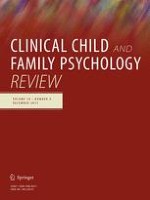15-09-2015
One Session Treatment for Specific Phobias: An Adaptation for Paediatric Blood–Injection–Injury Phobia in Youth
Gepubliceerd in: Clinical Child and Family Psychology Review | Uitgave 4/2015
Log in om toegang te krijgenAbstract
Blood–injection–injury (BII) phobia is a chronic and debilitating disorder, which has largely been neglected in the child literature. The present paper briefly reviews the aetiology of specific phobias with particular attention to BII and provides an integrated developmental model of this disorder in youth. Evidence-based treatments for child-specific phobias are discussed, and the development of a modified one session treatment (OST) approach to enhance treatment outcomes for BII phobia in children and adolescents is described. This approach is illustrated in two children with a primary diagnosis of BII phobia. The cases illustrate the unique challenges associated with treating BII in youth and the need for a modified intervention. Modifications included addressing the role of pain (e.g., psychoeducation, more graduated exposure steps) and disgust (e.g., disgust eliciting exposure tasks) in the expression of the phobia and fainting in the maintenance of this phobia. Moreover, it is recommended that parents be more actively involved throughout treatment (e.g., education session prior to OST, contingency management training, guidance regarding planning exposure tasks following treatment) and for families to participate in a structured e-therapy maintenance programme post-treatment.
